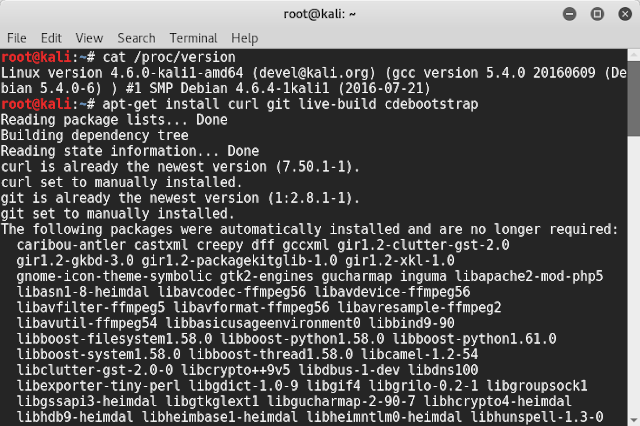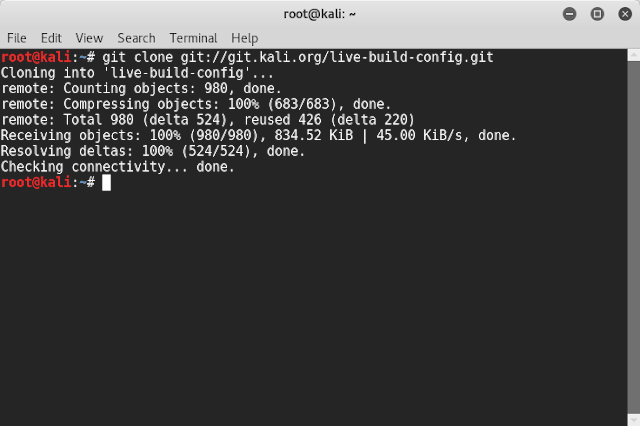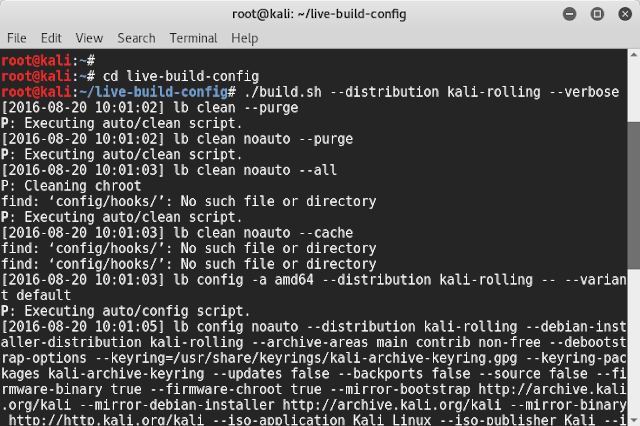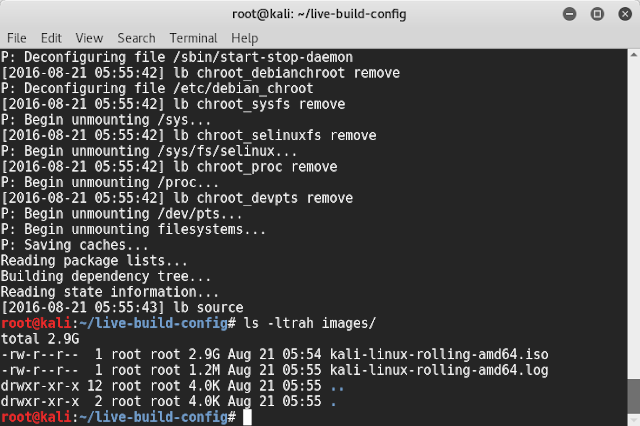Are you a user like me who breaks system and keep re-installing it, and every time doing the same apt-get update,apt-get upgrade,apt-get dist-upgrade to update your KALI 2016.1 to 2016.2.Wait a minute have you notice that Kali Linux 2016.2 has been in the wild since 2016-07-21, there just wasn’t any official announcement as it seems like an internal build-name/code.
Here is the version info for Kali 2016.1

and here’s is the version info for Kali 2016.2

So, Kernel is updated from 4.3.0 to 4.6.0 and build/release date is changed from (2016-01-13) to (2016-07-21). That means you will get 6 month worth of updates or around 2 GB of download and it will take time and effort.This post will also help those with slower Internet and/or download cap limited users. You do this once, keep that ISO and the only packages you will need it from that day onward. Sounds fair? I bet it does. Lets do it!
Building an updated Kali ISO is very easy, Probably you have already build it if you are a reader of KALI documentation, If not, here’s some dot points to convince you:
- This process creates an ISO with the latest packages, so you don’t need to download any (or too many) in coming weeks.
- You can configure various desktop environments (such as KDE, Gnome, E17, I3WM, LXDE, MATE and XFCE) and create multiple ISO’s. Same deal for these ISO’s. They will have the latest and greatest packages already in.
- You can control meta-packages in your build and only download the packages you need to build your custom ISO. This fits perfectly for those who work in minimal environment or works using a particular application. Also less download, smaller ISO.
- You do use live-build hook scripts in various stages of the Kali ISO live build.
- You can include additional files or scripts in your build and create ISO with it. This helps when you are building it for a particular organization.
You can configure virtually any aspect of your Kali ISO build using the Debian live-build scripts. These scripts allow developers to easily build live system images by providing a framework that uses a configuration set to automate and customize all aspects of building the image. The Kali Linux development team has adopted these scripts and they’re used to produce the official Kali ISO releases.
Requirements for updated Kali ISO
Ensure that your system meets the following requirements to avoid issues:
- About 20G free disk space.
- A decent Internet connection.
- Existing Kali environment.
Getting Ready — Setting up the live-build system
We first need to prepare the Kali ISO build environment by installing and setting up live-build and its requirements with the following commands:
apt-get install curl git live-build cdebootstrap

git clone git://git.kali.org/live-build-config.git

Now you can simply build an updated Kali ISO by entering the live-build-config directory and running our build.sh wrapper script, as follows:
cd live-build-config
./build.sh –distribution kali-rolling –verbose

The build.sh script will take a while to complete, as it downloads all of the required packages needed to create your ISO. It may take one hour or may be two.

And you will get your custom ISO.
Conclusion
I think this a great idea to build your custom ISO , If you have too many custom wifi or hardware that require too many package , You can simply bundle those in your pre-defined ISO that will work without any hassle.
Thanks for reading. If you’ve found this article helpful, do bookmark and share it. Any issues, let us know via comments section.